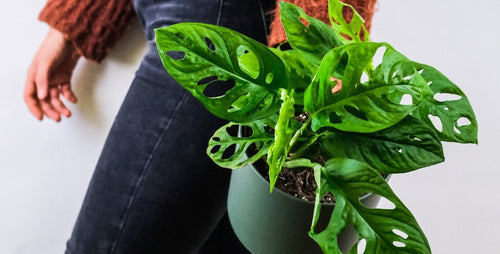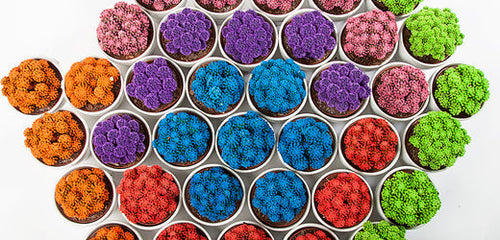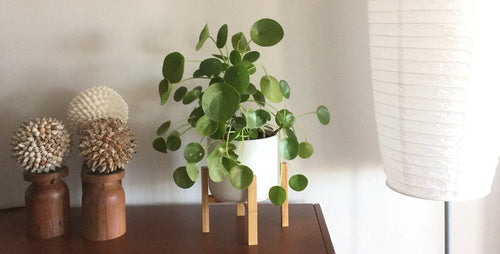By Karen Weir-Jimerson
When my sons were small, my husband Doug and I indulged their pet requests with a number of family animals that included dogs, cats, horses, donkeys, canaries, chickens, tropical fish, and two tortoises named Maximus and Minimus. Why not? We lived on several acres and had the room and time to care for our furry, hooved, winged, and finned menagerie. But before we handed over a high-energy puppy to our wiggly 5-year-old, we first got him a plant for his room. What he learned about caring for a plant helped him become the responsible pet owner he is today. Here are 11 cool plants that can help your child develop important caring skills.
SAFETY NOTE: Houseplants are not intended for human or pet consumption. In fact, many houseplants are poisonous. Talk to your child about the difference between leaves we eat (spinach and kale) and the leaves we don’t eat (houseplants and garden plants).

1. Discover the Power of Responsibility.
A plant is a living thing, and owning a plant requires acknowledgement of that, as well as the ensuing responsibility for keeping it that way. That said, it’s nothing a 4-year-old kid can’t master. And luckily, plants don’t need much care to keep them happy, leafy, and growing. Place it in the right light. Water it. Done.
Best kid pick: Dieffenbachia are ideal plants for children because they have large, colorful leaves.
2. Become More Creative.
Work with your child to craft a creative container for the plant. If Legos are littering the floor of every room, enlist your child to gather them up and build a container for his/her plant using the colorful blocks. Or deck out the plant like you do the family holiday tree: seasonal decor can include adding garlands, tiny lights, or other adornments for Christmas, Chanukah, Easter, Valentine’s Day, and birthdays.
Best kid pick: Dracaenas are ideal bedside plants for a kids’ room. They come in many forms, but all have long, strappy leaves. Try the treelike ‘Anita’ or the colorful ‘Lemon Lime’.
3. Learn Sequential Events and Scheduling.
Easier than reminding your child to make his/her bed everyday, the care for a plant involves just watering. But in most cases, an indoor plant should be watered every week or so. Create a calendar to help you child remember to water his/her plant. He/she can check off the activity like a to-do list. This continuity of care creates a sense of expectation in a child, helping him learn that living things need attention on a regular basis.
Best kid pick: Chinese evergreen loves about every indoor condition and is an easy-care starter plant for children. This jungle-in-a-pot can take the occasional forgetful waterer. When it’s happy, it will send up a little calla-lily-like flower.

4. Explore New Friends.
Let your child pick out a plant in the garden center. Take it home, place it in his/her room, and suggest that your child name for the plant. Do a little research about the type of plant. For example, sansevieria is also called snake plant, so ensuing names might be Snaky, Crawly, Kaa (after the snake in The Jungle Book), or Nagini (after the character Voldemort’s python in the Harry Potter books).
Best kid pick: Snake plant offers dramatically colored, thick, spear-like leaves that can thrive in low light.
5. Breathe Cleaner Air.
NASA studies have proven that indoor plants help cleanse the air -- and what better place for this to happen than in your child’s bedroom. While a kid might not fully appreciate cleansed air, Moms and Dads everywhere know that any type of air freshening in a kid’s room is welcome.
Best kid pick: Peace Lily offers a surprise -- a calla-like flower that floats on a tall stem above the leaves. This plant is one of the most efficient at filtering indoor pollutants, so it’s great for a child’s bedroom.
6. Discover a Plant's Role in the Ecosystem.
From preschool through college, kids learn that plants are an essential part of our planet’s ecosystem. Instilling the love and care for plants at an early age is a great way to help raise responsible citizens of the planet.
Best kid pick: ZZ Plant is one of the toughest indoor plants. It thrives in low light and doesn’t suffer if it misses the occasional watering. Shiny, thick, dark leaves makes this plant a kid favorite.
7. Learn Geography (and Time Travel!).
What part of the world do palms come from? Where do ferns grow? Get out a globe, atlas, or hop online with your child to find the original home, habitat, and history of his/her new houseplant. For example, there are around 3,000 species in the palm family that generally grow in topical and subtropical areas of the world. Palms date back to the Cretaceous Period and were growing on our earth 80 million years ago. How cool is that?
Best kid pick: Palms are easy to grow and like bright light and humidity. Kids like the fluffy, tactile foliage.
8. Embrace Whimsy.
Some plants are acrobats, and can grow up a trellis or hang down from a basket. Training a trailing plant, such as a philodendron, onto a topiary form can also turn it into a geometric shape or a green, leafy animal.
Best kid pick: Philodendrons come in a wide variety of leaf forms. They can climb or dangle and some leaves feature interesting jungly shapes.

9. Develop a Nurturing Attitude.
Develop a Nurturing Attitude.
The day-to-day care for a plant is ideal for a busy, easily distracted, and somewhat forgetful child. Plants don’t need care and nurturing every day. Once a week is good enough. And nurturing a plant is easy, because plant care mostly revolves around watering. But who says nurturing can’t also be fun. Your child can water his/her plant by misting leaves with a squirt gun or small hand sprayer. Get a cute watering can for weekly drinks.
Best kid pick: Ferns offer lacy leaves that love to be misted. In fact, they will tell your child that they need more moisture: the tips of their leaves will turn brown if they need more spritzing.
10. Practice Gentleness.
A plant is not a football and can’t be tossed about. Owning a plant, therefore, can help your child practice the type of gentleness required not only for plants, but also pets, especially pocket pets such as hamsters, gerbils, or sugar gliders. Help your child to gently groom a plant by removing any dead leaves.
Best kid pick: Boston fern looks like the plant version of fireworks. Kids love the leafy soft fronds.
11. Learn Math and Science Skills.
Encourage your child to make a height chart for his/her plant to measure its growth. Then help your child create a graph that shows growth over time. If you keep track of the amount of water given every week, you can also help your child create a graph that equates growth with water.
Best kid pick: Money tree is a tropical plant that grows quickly, making it a great option for horticultural math projects.

















